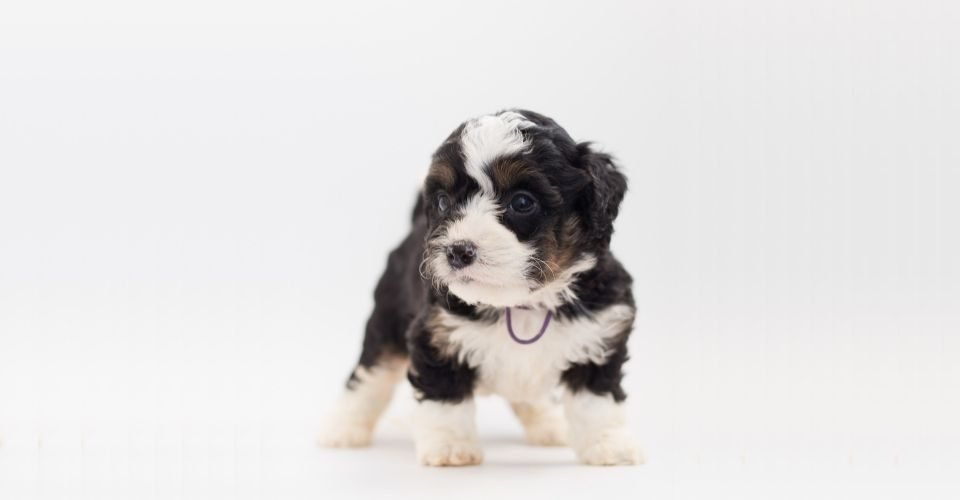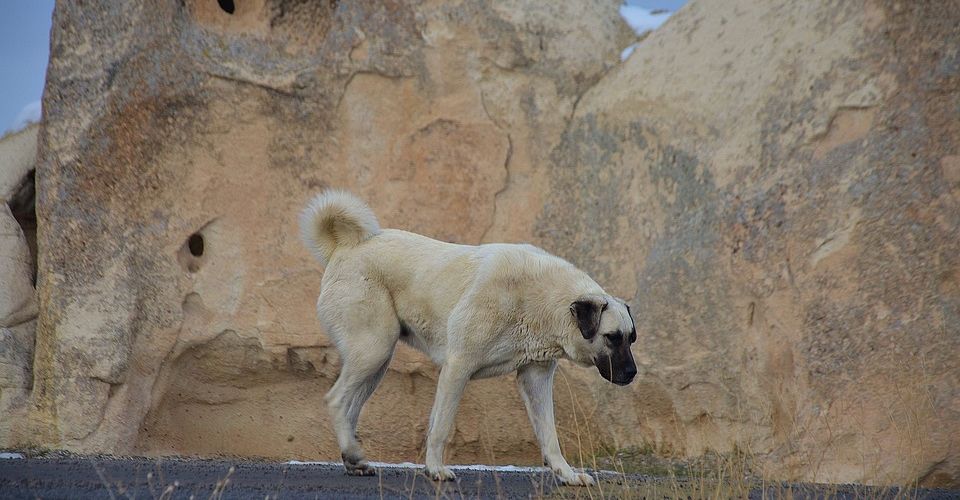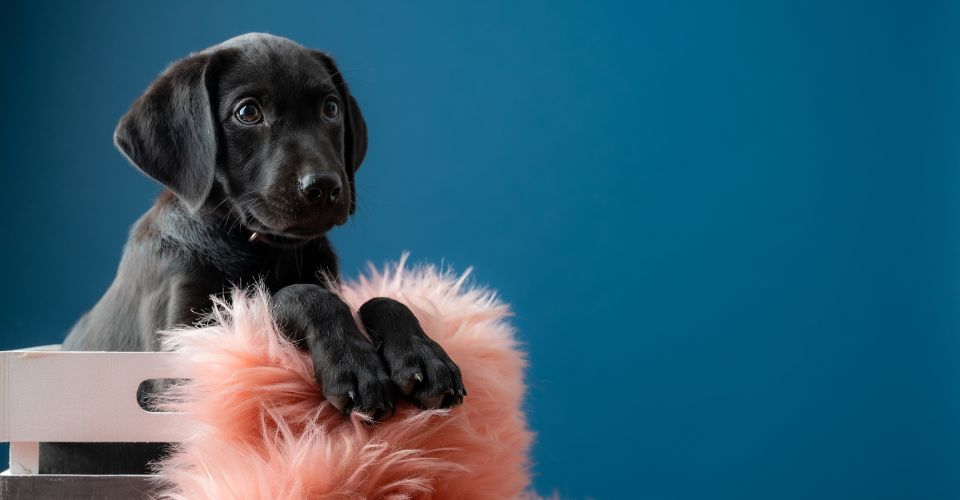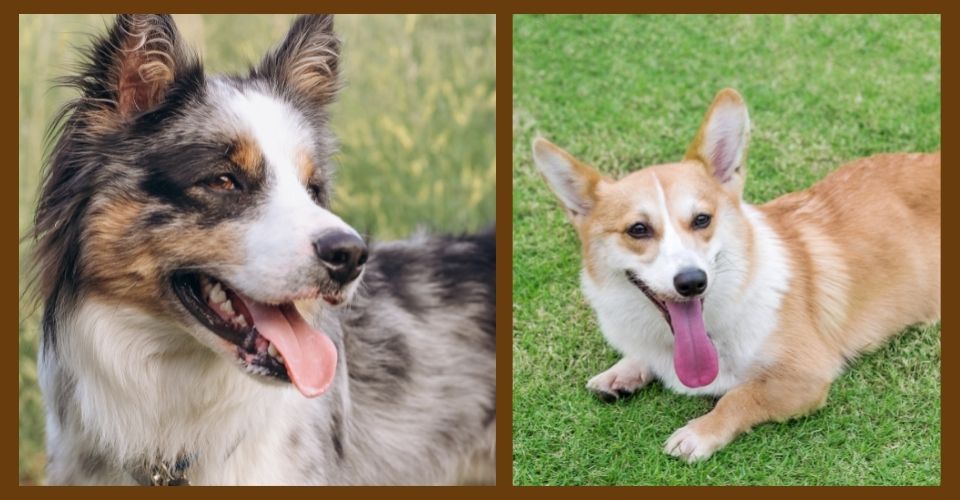Goofy, playful, and energetic creatures, Bernedoodle is a mix between a Bernese Mountain Dog and Poodle, also sometimes called the Bernese Mountain Dog Poodle mix.
Temperament-wise, Bernedoodles integrate well with people and are highly intelligent, so they also tend to be well with toddlers and children. This is the reason why Bernedoodle training does not require too much effort. They can be trained to perfection, but certain pups show stubbornness. This is due to improper breeding from the breeder’s side, which is why it is very important to pick a trustworthy breeder.
When it comes to their sizes, there are three distinct sizes a Bernedoodle may come in: Miniature Bernedoodle, Mini Bernedoodle, and Full-Grown Bernedoodle. As the name suggests, miniature ones are the tiniest, while the full-grown ones are the largest.
This article is all about Bernedoodles. Read on and explore the breed, its history, temperament, and much more.
History
Bernedoodle is relatively a new breed. It was first introduced by Sherry Rupke, a renowned dog breeder. By breeding the two dogs together, she achieved what she was looking for: a hypoallergenic dog that is a perfect solution for those with allergic reactions do dog. The breeding took place in 2003—though some say that Bernedoodles existed way before but such an existence might be purely coincidental.
Bernedoodles: How Do They Look?
At first sight, they will resemble other mixed doodles such as Golden Doodle, Cavapoo, and Labra Doodle. But what makes a Bernedoodle different from others is its unique facial pattern that resembles that of a Rottweiler.
This comes from its Bernese parent, which also gives them a bold look. If you are looking for a pet that can cuddle with your loved ones like a mini bear while still being able to intimidate strangers, a Bernedoodle is what you should opt for.
Size
If you are wondering how big do Bernedoodles get, you should know that there are various factors behind their sizes which are mentioned below:
- Diet: If you feed him a healthy diet full of nutrients and minerals, your pet will grow to his maximum capacity. An unbalanced diet filled with too many fats might stunt his growth. So make sure you select the perfect food combination for the little teddy bear.
- Parent: If his both parents is of short stature, there is a high probability that your Berner will turn out to be a little toy dog as well. If you want to have a stud-looking Berner, maybe you should do a little research about his parent.
Below is a brief overview of the three types of Bernedoodle sizes:
- The standard Berndoodle grows up to 22 – 29 inches at shoulders.
- Mini doodles can grow from 17 – 21 inches.
- Tiny ones are the smallest and vary from 11 – 16 inches in size.
Weight
As mentioned above, the standard version of the Bernedoodles is the biggest of them all, weighing around 60 – 90 lbs. A mini Bernedoodle can weigh from 26 to 47 pounds, and a tiny one will weigh approximately 11 – 25 pounds.
Bernedoodle Growth Chart
The growth chart of Bernedoodles also varies according to their types. Using this data, you can determine how big and heavy your fluffy bear will—and can—grow. This is important as you can calculate the daily food requirement for proper growth and the living space he will be needing while growing up.
| Duration | Weight |
|---|---|
| 1 – 3 months | Starting from 1 – 2 lbs., they will be close to 32 – 36 lbs. at maximum after three months |
| 4 – 9 months | This is the period when they will get the most of their weight and will almost reach their full potential, reaching as much as 90 lbs. |
| 10 – 12 | At this point, their weight growth will become slow, but they will continue to grow. |
It is important to note that Bernese mountain dogs take about three years to grow while their Poodle parent can reach their full brim in about 1.5–2 years fully. Therefore, a Bernedoodle will reach his full growth according to his type:
- F1 Berner: They have a 50/50 ratio of Bernese mountain dog and Poodle.
- F1b Berner: They have 75/25 ratio Bernese and Poodle genes, respectively.
It is also important to note that the F1, F1b, and the Australian doodle will reach their full height in a year while their weight will continue to grow as much as 2.5 years—if it is an F1 Berner.
Color
Bernedoodle comes in a plethora of colors, although many pups acquire the unique tri-colored pattern. These tri-colored Bernedoodles resemble the Bernese Mountain dogs due to their brown color over their eyebrows and around their snouts.
Other color includes white, tan, brown, black and bi-colored. Bernese Mountain dogs usually come in a tri-color, while Poodle can acquire a variety of different colors. Therefore, a Berne doodle can have all the color coats their parents can have.
Australian Bernedoodle
The Australian Bernedoodle is a mixture of Australian Labradoodle and the Bernese Mountain dog. The resulting dog is a perfect combination of a highly intelligent, energetic, and trainable dog.
The Australian Labradoodle used for creating Aussie Berners is different than the conventional Labradoodle. They are created by the combination of Labrador, Poodle, American Cocker Spaniel, English Cocker Spaniel, and the Irish Water Spaniel.
Therefore, they have slightly different traits and physical characteristics, such as they reach their maximum weight in nearly two years and their height continue to soar till they are one.
Bernedoodle Vs. Goldendoodle

Berners, as we know them, are a hybrid of Poodle and the Bernese Mountain dog, whereas a Golden Doodle is a mix of Poodle and Golden Retriever.
In terms of looks, a Goldendoodle comes in a variety of colors, including gold, apricot, red, and so on. A Berner will have chocolate, black, white, and brown in combinations of mostly tri-colors. Berners typically get bigger than Goldendoodle and can weigh as much as ninety pounds, whereas a Groodle can weigh up to seventy-five pounds.
Originally, a Berner’s Bernese parent was kept for guarding the farms in Switzerland. That is why a Bernedoodle might exhibit a more dominant behavior than a Goldendoodle. Golden Retrievers, on the other hand, were bred for guiding purposes. Therefore their hybrid inherits intelligent characteristics.
Bernedoodle Vs. Sheepadoodle

Sheepadoodles are a result of interbreeding between the Old English Sheepdogs and Poodles. They are gentle, calm, and trainable dogs. They are distinctive from their Berner cousins, and you can easily differentiate between the two at first sight.
Their coat is not as long, hairy, and dense as a Berner’s coat. Secondly, they usually come in combinations of bi-colors, such as white, black, and red. They weigh almost as same as the Broodle, which is seventy-five pounds, but they might get a little bit heavier than Broodle.
The maximum height a Sheepapoo will get to is 29 inches, the same as Bernedoodles. If we take a look at the Sheepadoodle’s ancestors, we will find that the English sheepdogs were originally bred for herding and keeping the herd of sheep in line. Therefore, Sheepadoodles tend to have more explosive energy than Bernedoodles.
They both have similar qualities when it comes to trainability and their family-oriented temperament.
Do Bernedoodles Shed?
It is important to know about the shedding tendencies of a dog before buying or adopting him, especially for people with allergic reactions to dogs. So you might be wondering, do Bernedoodles shed?
The answer is no because they shed the least amount of hair and dander. Bernedoodles are one of the most hypoallergenic dogs, and they are preferred by those with allergic reactions to dander and shedding.
Note, however, that no dog is completely hypoallergenic, meaning that they will shed hair and dander but not up to a dangerous level.
To keep things in balance, you must keep regular hair trimming and maintenance. Otherwise, the shedding of hairs and dander might increase.
How Much Should You Brush Your Bernedoodle?
There is no general rule. It all depends on your Berner’s coat and volume. If your dog already has issues with his coat, you should brush him every other day. After you have resolved the matting or tangling issue, you should brush your cuddly friend at least thrice a week.
This might seem a little bit too much but some people also recommend brushing the Berner every day. All you need is to provide your Berner with a hygienic environment with a proper hair care routine. A good way to familiarize your dog with the brushing routine is to do it when he is still a puppy.
Bernedoodle Lifespan
This breed is a new one, and no authentic information on its lifespan is available. Generally, the standard Bernedoodle will live up to twelve years, a mini will catch up around fifteen years, while the tiny Berners can live as long as eighteen years.
It is, however, important to note that they tend to have a much better lifespan than their Bernese parent that usually lives up to eight years.
Bernedoodle Health Issues
Bernedoodle are generally healthy dogs with fewer health problems as compared to their parents. But this does not mean they are hundred percent immune to diseases. They tend to inherit diseases such as:
- Hip Dysplasia.
- Ocular Diseases.
- Skin Diseases.
- Cancer
Berners tend to get hotspots which are irritated areas of the skin due to excessive chewing. This happens due to the matting of hair and Berner trying to groom himself. Therefore, hair grooming is a must to prevent any skin disease.
Other diseases can be avoided by taking a proactive approach. Before buying one, you should check the health certificate or make sure you get one from a reputable breeder. The breeders pay a hefty amount of money for lab tests to make sure their parents are free from hereditary diseases. The hybrid breed that is produced is often free from hereditary diseases.
Inbreeding in dogs or any other animal excessively develops diseases that are often life-threatening. This is the reason why the Bernese Mountain dogs tend to have more frequent cases of hip dysplasia, elbow dysplasia, and so on.
Bernedoodle temperament
Bernedoodles can best be described as energetic, playful dogs with utmost love for their family. They love the company of their family and sometimes become frustrated when left alone for a longer period. Engage them in games and exercise and take them out for walks, as they are wanderers and love to have a playful time with their owners.
To develop a strong bond with your Berner, it is recommended that you train and play with him when he is a pup. They learn and adapt well and at a quicker pace as they are intelligent dogs. They are essentially not guarding dogs; that is why they are not ferocious towards other dogs.
However, the most important aspect to note here is that Berners can also behave skittishly and stubbornly. This depends upon their parent; if they were like this, so will be the Berner pup.
How Much Can a Bernedoodle Cost?
A Bernedoodle’s typical cost lies in between $2,500 and $5,500. This is a typical cost from a reputable breeder. You can find Berner for less than twenty-five hundred dollars from less reputable breeders.
Another factor is the beauty of the pup you are going to buy. Often the rare-colored pups are sold for as high as $5000 – $6000. You should do some research to buy the one which best suits you.
Conclusion
Bernedoodles of all kinds are majestic and beautiful in their unique way. They are a social, loving, and energetic family dog that requires constant love and affection. They also need special attention for their hair grooming to look their best. They are just the perfect size that everyone wants in a family dog. So you should get yourself one if you want an all-rounder dog for yourself!





